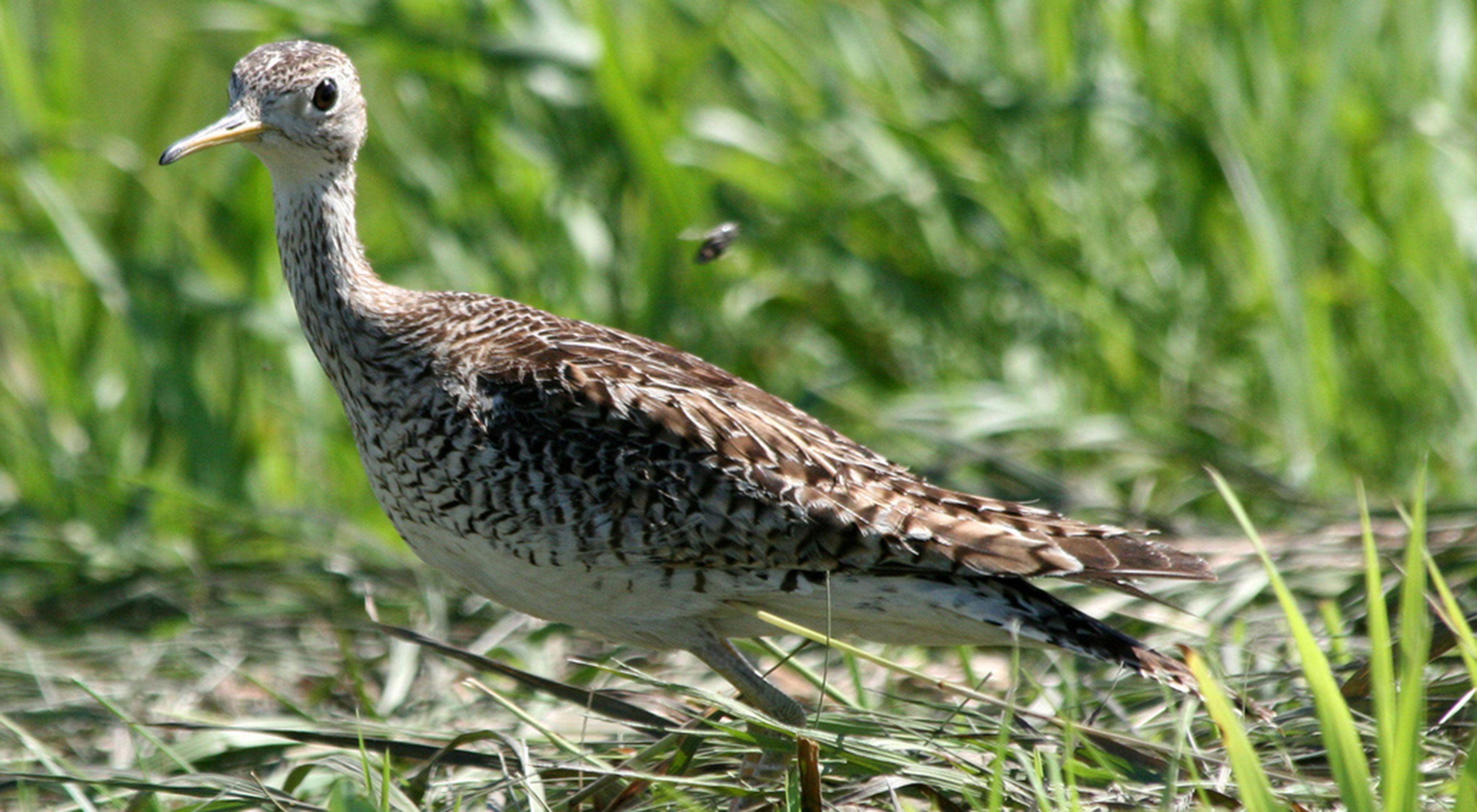Description
In the early 1980s, prairie enthusiasts found several rare plant species at Red Rock Prairie. One of these plants was the unassuming prairie bush clover. This easily-overlooked clover is state-listed as endangered and federally listed as threatened. It is found today at fewer than 40 sites in 23 counties of Iowa, Illinois, Minnesota and Wisconsin.
Prairie bush clover's rarity is probably best explained by the loss of its tallgrass prairie habitat. At the time of European settlement, native prairies covered a third of Minnesota. Only scattered remnants of prairie can be found today.
Many remaining prairie bush clover populations occur in places that escaped the plow because they were too steep or rocky. That's the case at Red Rock Prairie, where outcrops of Sioux quartzite prevented the land from being tilled. The population at this preserve is doing well, and evidence of prairie bush clover / round headed bush clover hybrids has been found. Now with the prairie restoration work completed in 2007, bush clover may expand its range across the preserve.
Why TNC Selected This Site
The Nature Conservancy preserved and protected this land because of the prairie bush clover. There is a thriving, healthy population of this plant here, along with smaller, scattered throughout the region.
TNC, however, is preserving more than just this rare plant. Tallgrass prairie communities, such as Red Rock prairie, are globally endangered. Less than one-tenth of 1 percent of Minnesota's original prairies remain.
What TNC Has Done/Is Doing
Fire once was part of the natural cycle of life on the prairie. It cleaned out underbrush, killed invasive plants and increased the vigor of fire-dependent plants. Each year, TNC conducts ecologically sensitive controlled burns at Red Rock Prairie to enhance the quality of the vegetation.
Red Rock, like many prairies in the state, has a problem with harmful, non-native species. Weedy plants like smooth brome and Kentucky bluegrass compete with the prairie's native plants. By using controlled burns, TNC can keep these invasive plants in check.
TNC also restored more than 250 acres of crop fields and degraded pasture to native prairie. Restoration planting was completed in fall 2007 with funding through the U.S. Fish & Wildlife Service’s private stewardship grant program. Salix Ecological Resources also made significant in-kind contributions to the project.
The preserve has undergone a total transformation since 1998, with the removal of an old farmsite, trees, powerlines and fences. It is large enough to give visitors a real feel of open prairie.
